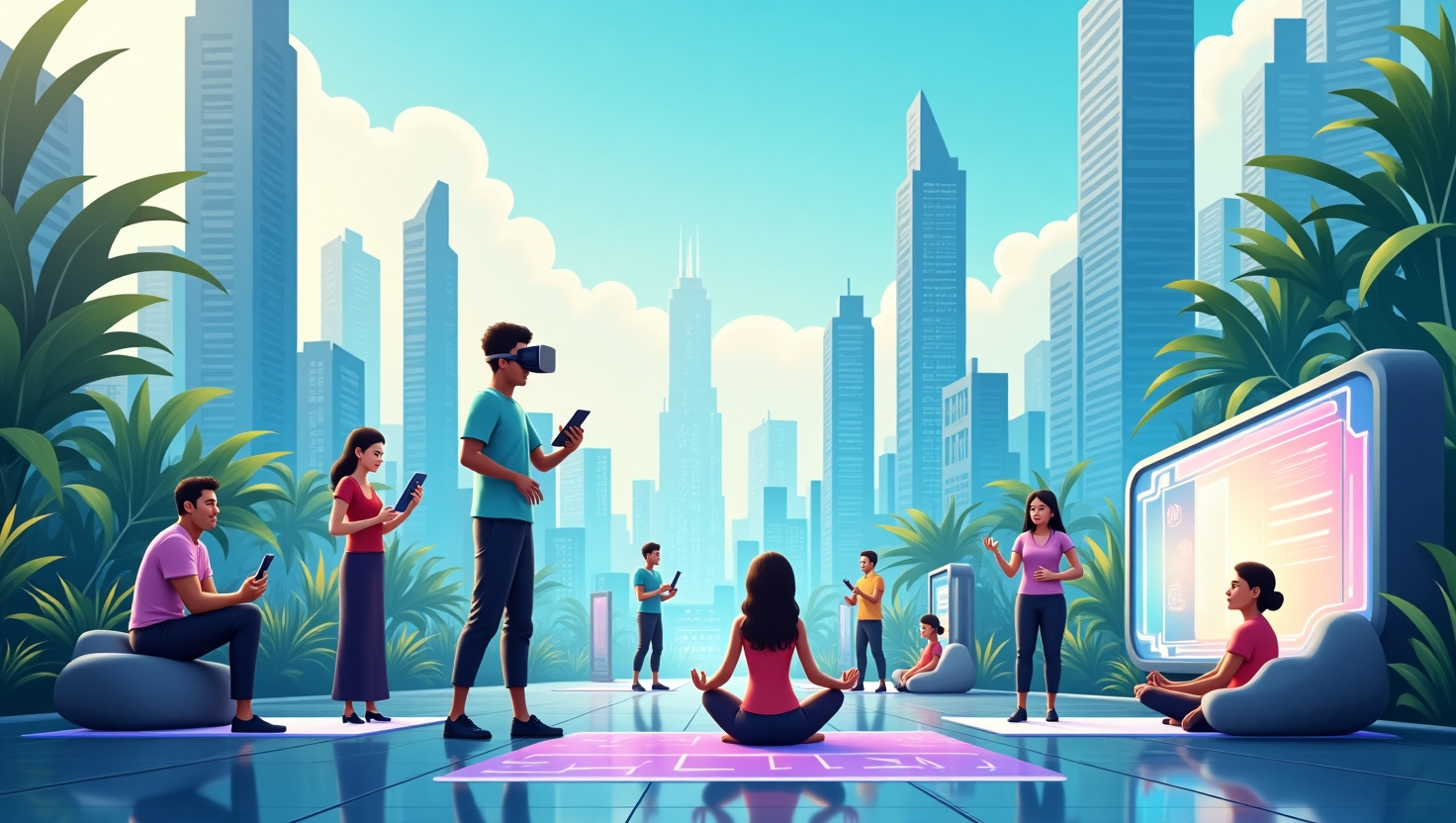Introduction
In today’s fast-paced world, technology is redefining how we enjoy entertainment. From immersive movie experiences to interactive gaming worlds and innovative music platforms, advancements like virtual reality (VR), artificial intelligence (AI), and streaming services are shaping the future of fun. This article explores the latest trends transforming movies, gaming, and music, offering a glimpse into an exciting, tech-driven era.
Movies: A New Era of Immersion
The film industry is embracing technology to create unforgettable experiences. Virtual Reality (VR) and Augmented Reality (AR) are leading the charge, letting audiences step inside their favorite films. For example, VR headsets can immerse viewers in a 360-degree movie set, while AR overlays digital elements onto real-world scenes, enhancing storytelling. These innovations make watching movies feel like living them.
Streaming platforms like Netflix and Disney+ have also changed how we consume films. They offer vast libraries and produce original content, rivaling traditional studios. Additionally, AI is streamlining film production by assisting with scriptwriting, editing, and creating realistic visual effects, saving time and costs. As these technologies evolve, moviegoers can expect even more interactive and personalized experiences.
Gaming: Beyond the Screen
Gaming is at the forefront of technological innovation, pushing boundaries in 2024. VR headsets, such as Apple’s Vision Pro, deliver unparalleled immersion, letting players feel like they’re inside the game. Augmented Reality games, building on successes like Pokémon Go, blend digital and physical worlds for unique experiences. These technologies are making gaming more engaging than ever.
Cloud gaming is another game-changer. Services like Xbox Cloud Gaming and NVIDIA GeForce Now allow players to stream high-quality games without expensive hardware, democratizing access. The metaverse is also transforming gaming, creating persistent virtual worlds where players socialize, work, and attend events. For instance, Fortnite’s virtual concerts, featuring artists like Ariana Grande, have drawn millions, merging gaming with live entertainment. AI enhances gameplay by powering realistic non-player characters (NPCs) and adapting challenges to player skill levels, ensuring dynamic experiences.
Music: From Streaming to Virtual Performances
Technology has revolutionized how we listen to and create music. Streaming services like Spotify and Apple Music dominate, offering personalized playlists and instant access to millions of tracks. These platforms use AI to analyze listening habits, curating recommendations that feel tailor-made. As a result, music discovery has never been easier.
AI is also reshaping music creation. Algorithms can compose songs, mimic famous artists’ styles, or generate entirely new genres, sparking debates about creativity. Virtual concerts in the metaverse are gaining popularity, allowing artists to perform for global audiences without physical venues. These events, hosted on platforms like Fortnite, reduce environmental impact and increase accessibility. Immersive audio technologies, such as Dolby Atmos, further enhance the listening experience by creating 3D soundscapes that surround the listener.
Conclusion
The lines between movies, gaming, and music are blurring as technology weaves them together. VR and AR create immersive worlds, AI fuels creativity, and the metaverse connects global audiences. These trends are not just enhancing entertainment but redefining it, promising a future where fun is more interactive and accessible. Stay tuned to GTPulse for more insights into the tech shaping our world.
Key Citations
- StarTechUP: 8 Trends in Gaming Technology That Will Transform the Industry in 2024
- PwC: Top 5 Developments Driving Growth for Video Games
- Forbes: The Five Biggest Gaming Technology Trends In 2022
- Filmustage: Unfolding the Future of Film Technology
- UJAM: Top Music Tech Trends in 2023
- Soundhub: Top 7 Trends in Music and Audio Tech for 2025












